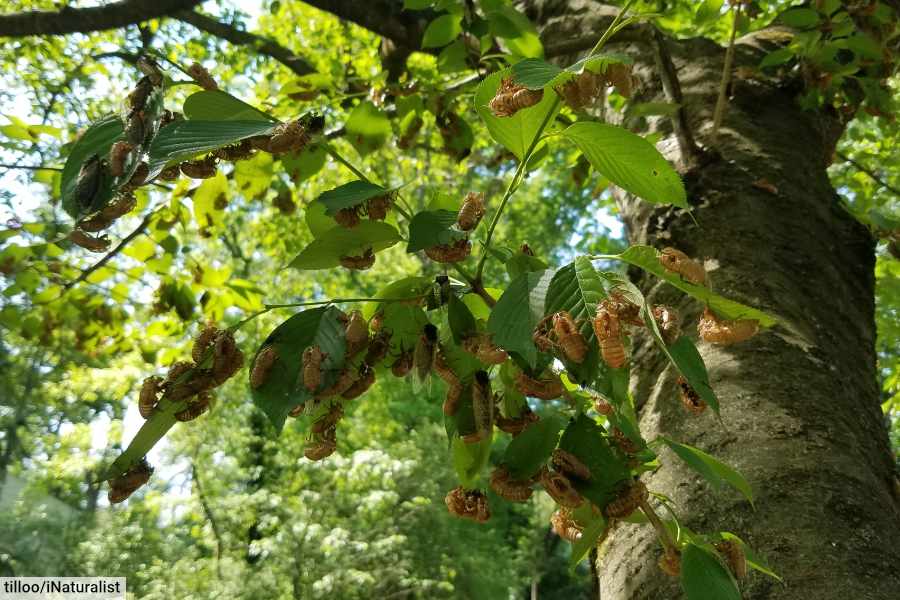
Periodical cicadas are a group of insects known for their mass emergences every 13 or 17 years, in which millions of the insects simultaneously emerge from the ground to breed.
2024 is one of the rare years in which a population, or “brood” of cicadas with a 13-year life cycle will emerge at the same time as a neighboring brood with the more common 17-year life cycle.
This will mean that parts of central Illinois and eastern Iowa, where the two broods overlap, will be inundated with vast numbers of the distinctive insects over a brief period this spring / early summer.
Insect Invasion!
Residents in the above areas will see the large, red-eyed insects swarming, en masse, into the trees to mate. The total numbers of insects involved is staggering; up to 40,000 cicadas can emerge around a single tree.

The experience won’t just be visual; the distinctive buzzing sound of the males – made to attract females – is one of the loudest insect-produced sounds.
The buzzing will ring out during the day for a period of 4-6 weeks. After this time, their work done and their eggs safely buried in the branches of trees, the insects will die.
The last time this spectacular natural phenomenon occurred was in 1803; perhaps it was witnessed by Meriwether Lewis as he set out on the early stages of the Lewis and Clark Expedition at the behest of then-President Thomas Jefferson?
Who knows what the world will look like in 2245; the next time the dual-emergence is set to take place?
Are Cicadas Dangerous?
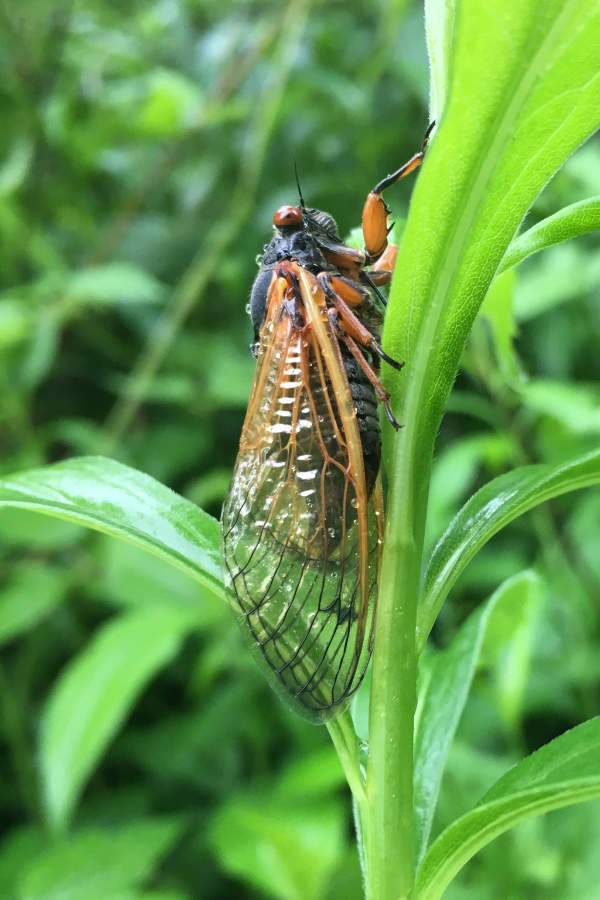
Cicadas are not dangerous to humans; they do not bite or sting and are generally harmless. The primary impact they have is on vegetation, as female cicadas lay eggs in small twigs, which can sometimes damage young trees. Cicadas are more of a nuisance due to their loud noise and large numbers during emergence periods, rather than a threat.
What Is A Cicada?
A cicada is an insect belonging to the superfamily Cicadoidea, which itself is part of the insect order Hemiptera, home of the “true bugs”. Other true bugs include aphids, planthoppers, leafhoppers, assassin bugs, shield bugs, backswimmers and pond skaters. Currently, 3,376 cicada species are recognized (source).
Cicadas are relatively large insects characterized by their prominent eyes set wide apart on their heads, short antennae, and transparent, veined wings that are held over their bodies like a tent.
Cicadas are most famous for the loud, buzzing “songs” produced by males, which are used to attract females. This sound is created by a specialized structure called a tymbal, located on the sides of the abdominal base.
The rapid buckling and unbuckling of the tymbal muscles produce the cicada’s distinctive sound, which can be one of the loudest of all insect-produced noises.
What Is A Periodical Cicada?
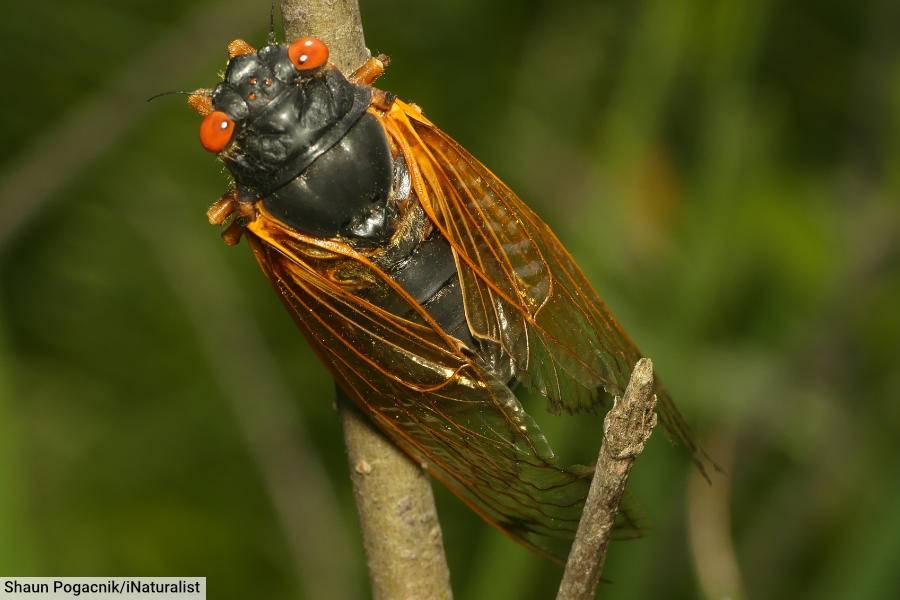
A periodical cicada is a cicada of genus Magicicada. This group contains 7 species, all of which are found in eastern North America. Periodical cicadas are distinguished by their extraordinarily long life-cycles, which are completed with a mass emergence every 13 or 17 years.
The periodical cicada population is divided geographically into groups known as “broods” depending on the length of their life cycle and the years in which they emerge. A single brood can contain periodical cicadas of different species.
Thirty broods were originally identified by American entomologist Charles Lester Marlatt in 1907. Each was assigned a roman numeral for identification. Today, only 15 are known, including Broods XIII and XIX, both of which are predicted to emerge in 2024.
Brood XIII, also known as the “Northern Illinois brood”, has a 17-year life cycle, while Brood XIX, the “Great Southern Brood”, has a 13-year life cycle. The two broods, whose ranges overlap in parts of central Illinois and eastern Iowa, only emerge together once every 221 years.
Other cicada species are present in North America, but only the periodical cicadas have this extremely long (in insect terms) life cycle.
Periodical Cicada Life Cycle
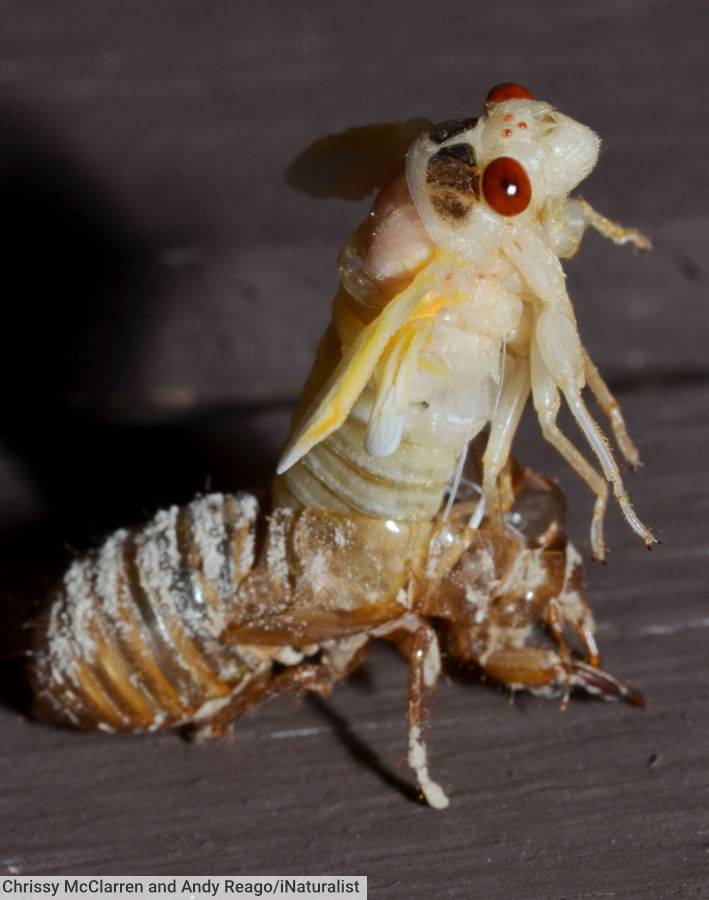
Like other cicadas, periodical cicadas have a three-part life cycle consisting of egg, nymph and adult stages.
What sets periodical cicadas apart is the length of their life cycle, which is either 17 or 13 years long, depending on which population, or “brood”, an individual belongs to.
The life cycle of a periodical cicada begins when an adult female lays eggs in the slits she cuts into tree branches. Once the eggs hatch, the tiny nymphs fall to the ground and burrow into the soil.
Here, they spend the majority of their lives, slowly growing and feeding on sap from tree roots. This underground development phase can last either 13 or 17 years. As they mature, the nymphs undergo several stages of molting.
In the final year, the mature nymphs emerge en masse from the ground, usually in late spring or early summer. They climb up nearby vegetation where they molt for the last time, shedding their exoskeletons to reveal their adult form.
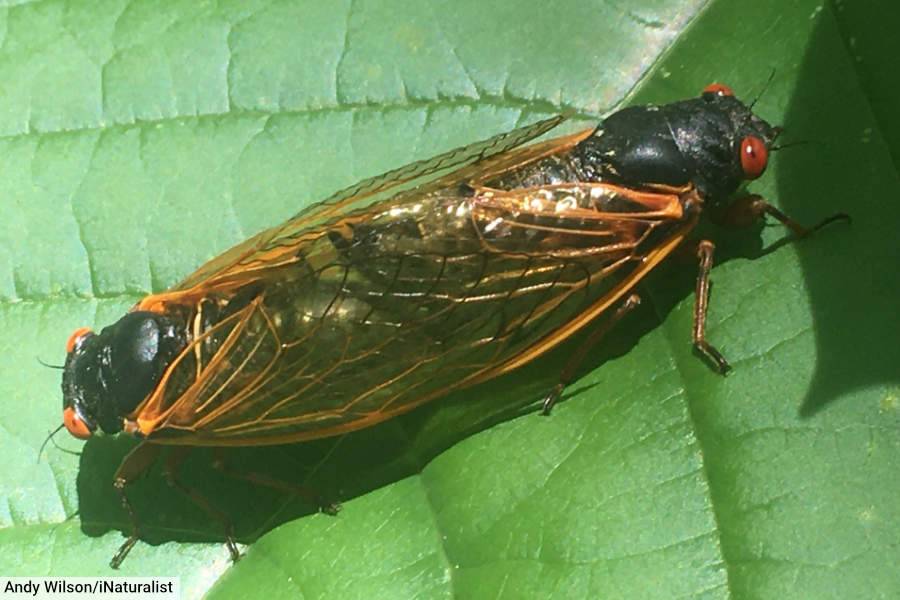
After this final molting, the adults have a short lifespan of about 4 to 6 weeks, during which their only goal is to mate. After mating, the females lay eggs, thereby ensuring the continuation of the cycle with a new generation, and both males and females soon die.
Why Do Periodic Cicadas Have Such A Long Lfe Cycle?
The lengthy life cycle of periodical cicadas is an adaptation that has fascinated scientists for years. Potential reasons for the insects’ 17 or 13-year life cycles include:
Predator Satiation: The cicada’s long life cycles help in predator avoidance through a phenomenon known as predator satiation. By emerging in massive numbers, cicadas can overwhelm predators, ensuring that enough individuals survive to reproduce.
Prime Numbers: Both 13 and 17 are prime numbers. These durations may be an evolutionary strategy to avoid synchronizing with the life cycles of potential predators and parasites. If cicada emergences were on a more common, non-prime-numbered cycle, it would be easier for predators to synchronize with them, leading to higher predation rates.
Other Historical and Environmental Factors: The specific length of the cicadas’ life cycles might also be influenced by historical climate conditions and environmental factors. It’s hypothesized that these cycles could have been shaped during past ice ages, with cicadas evolving longer life cycles to cope with the longer, colder conditions.
Discover More With Active Wild
You can find out more about insects on this page: Insects – The Ultimate Guide
Discover more invertebrates on this page: List Of Invertebrates
You can see more North American animals on this page: North American Animals
Visit our main animals page for links to animal information and a complete guide to the animal kingdom: Animals
The post Cicada Invasion! Millions Of Insects Predicted To Emerge In 2024 appeared first on Active Wild.